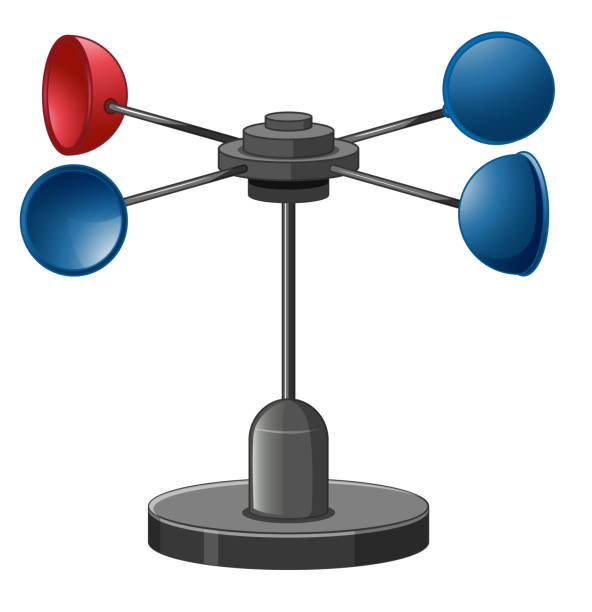How an Anemometer Can Improve Your Weather Surveillance System
How an Anemometer Can Improve Your Weather Surveillance System
Blog Article
Anemometers Revealed: Understanding Their Importance in Environmental Surveillance and Safety And Security Actions
The function of anemometers in ecological tracking and safety and security actions is frequently taken too lightly, yet their significance is undeniable. These instruments have a long background rooted in scientific questions and technical developments, evolving to become essential tools in numerous areas. From meteorology to aviation safety, anemometers play a crucial duty in offering accurate data that educates decision-making processes and enhances total safety and security. Understanding the details of anemometers unveils a globe of essential understandings that are essential to our understanding of the environment and the procedures we take to ensure safety.
Background of Anemometers
The development of anemometers can be mapped back to the ancient civilizations where primary wind gauging devices were first utilized. These very early wind measurement devices laid the foundation for the development of extra sophisticated anemometers over time. Among the earliest well-known anemometers was the hemispherical mug anemometer developed by Leon Battista Alberti in the 15th century. This design was composed of 4 hemispherical mugs that gathered wind energy, providing a measurement of its intensity based upon the rate of rotation.
Over the years, developments in modern technology led to the development of even more modern anemometers, including ultrasonic anemometers and laser Doppler anemometers, offering increased precision and efficiency in determining wind rate and instructions. The history of anemometers showcases a remarkable journey of innovation and development in the area of meteorology.
Sorts Of Anemometers
Throughout the field of meteorology, numerous sorts of anemometers have been created to properly determine wind rate and direction. The most typical kind is the mug anemometer, which includes three or four mugs installed on straight arms that turn with the wind. As the mugs spin, the rate at which they turn is straight proportional to the wind rate. Another commonly used kind is the vane anemometer, which includes a tail or fin that straightens itself with the wind direction. This alignment permits the device to establish the wind instructions. Sonic anemometers use ultrasonic signals to measure wind speed and instructions accurately. They are generally utilized in research study applications due to their high accuracy. Hot-wire anemometers operate based on the concept that the cooling impact of wind on a warmed cable is symmetrical to the wind speed. These anemometers appropriate for determining reduced wind rates with high accuracy. Each type of anemometer has its staminas and is selected based upon the details demands of the monitoring job at hand.
Applications in Weather Forecasting
Having discussed the different kinds of anemometers used in meteorology for measuring wind speed and direction, it is necessary to discover their functional applications in the field. Anemometers play a vital function in meteorology by giving exact and real-time information on wind conditions (anemometer). Meteorologists utilize anemometers to check wind rate and instructions to anticipate climate patterns, problem cautions for serious climate occasions like storms, storms, and hurricanes, and examine weather for air travel safety
In meteorology, anemometers aid in comprehending regional and local wind patterns, which are vital for predicting weather condition changes and determining climatic trends. These gadgets are likewise made use of in research study to examine microclimates, metropolitan warm islands, and air contamination diffusion. In addition, anemometers are utilized in farming to enhance plant administration techniques, such as irrigation and chemical application, based upon wind problems.
Relevance in Air Travel Security
An integral facet of ensuring aeronautics security depends on the see this here thorough tracking of wind problems utilizing anemometers. Anemometers play a crucial role in air travel by supplying real-time data on wind rate and instructions, assisting pilots in making informed choices throughout touchdown, trip, and take-off. Unpredictable and solid winds can significantly impact aircraft operations, making it crucial for air travel authorities to rely upon exact wind measurements to make certain the security of travelers and team.

In the dynamic atmosphere of aeronautics, where even small modifications in wind rate and instructions can have profound impacts, anemometers stand as indispensable devices for promoting safe and secure air traveling.
Function in Environmental Study
Anemometers play a crucial duty in environmental research study by offering essential information on wind rate and direction. By properly measuring wind qualities, anemometers assist scientists examine the movement of pollutants in the air, assess the effect of commercial emissions, and predict the spread of pollutants in the atmosphere.


Conclusion
In conclusion, anemometers have played an essential duty in environmental tracking and safety more info here actions. Understanding the value of anemometers is necessary for properly measuring wind speed and direction, which is important for predicting weather condition patterns, making sure safe aviation procedures, and performing environmental research studies.
One of the earliest known anemometers was the hemispherical mug anemometer created by Leon Battista Alberti in the 15th century. Over the years, developments in modern technology led to the growth of more contemporary anemometers, consisting of ultrasonic anemometers and laser Doppler anemometers, offering raised precision and efficiency in determining wind speed and direction. Hot-wire anemometers operate based on the principle that the cooling effect of wind on a heated wire is proportional to the wind rate. Meteorologists use anemometers to monitor wind rate and instructions to anticipate climate patterns, issue warnings for extreme weather events like storms, tornadoes, and tornados, and analyze climatic conditions for aviation safety and security.
Understanding the value of anemometers is crucial for accurately gauging wind speed and instructions, which is essential for anticipating climate patterns, making certain secure aeronautics procedures, and carrying out environmental studies. (anemometer)
Report this page